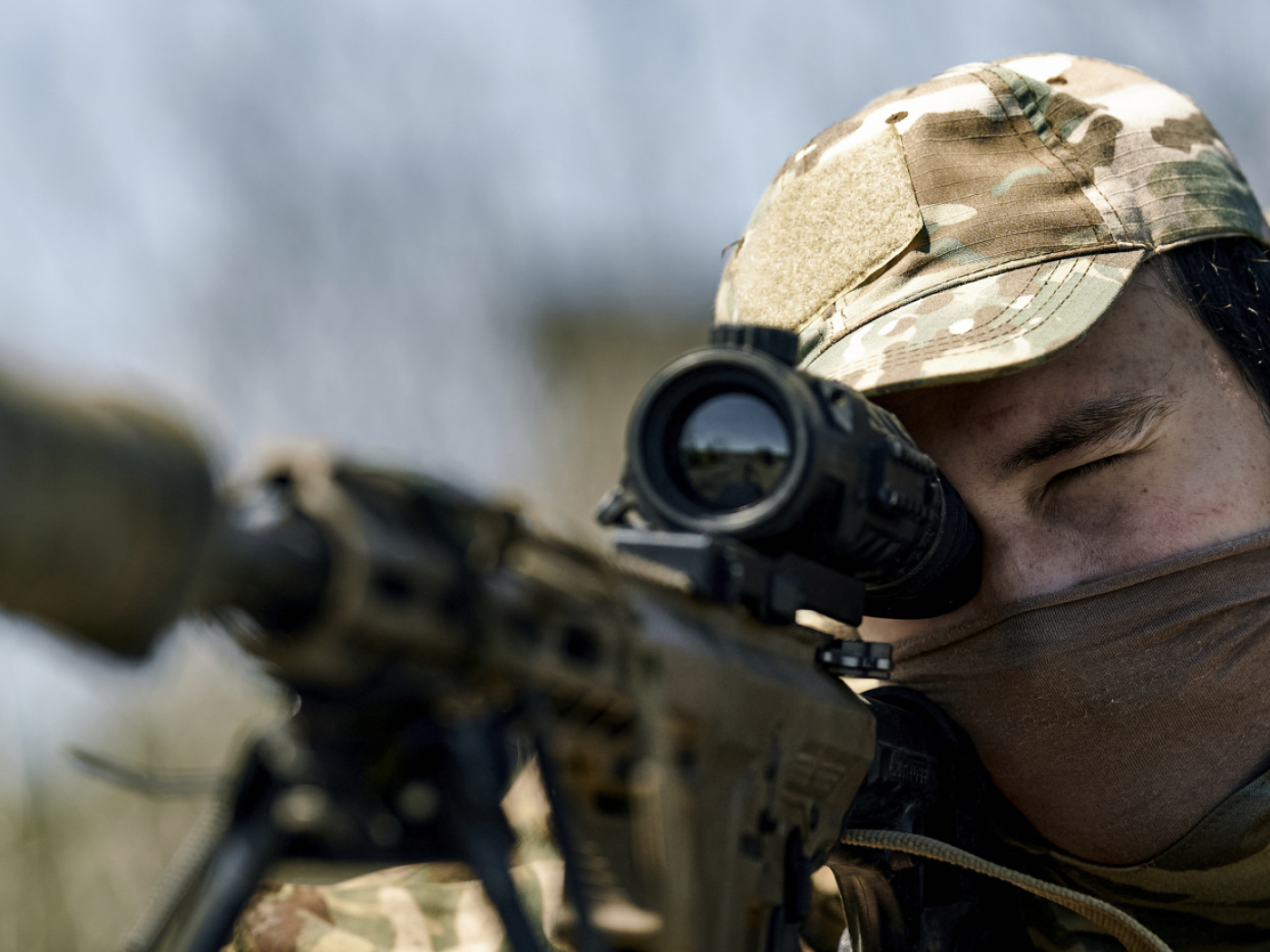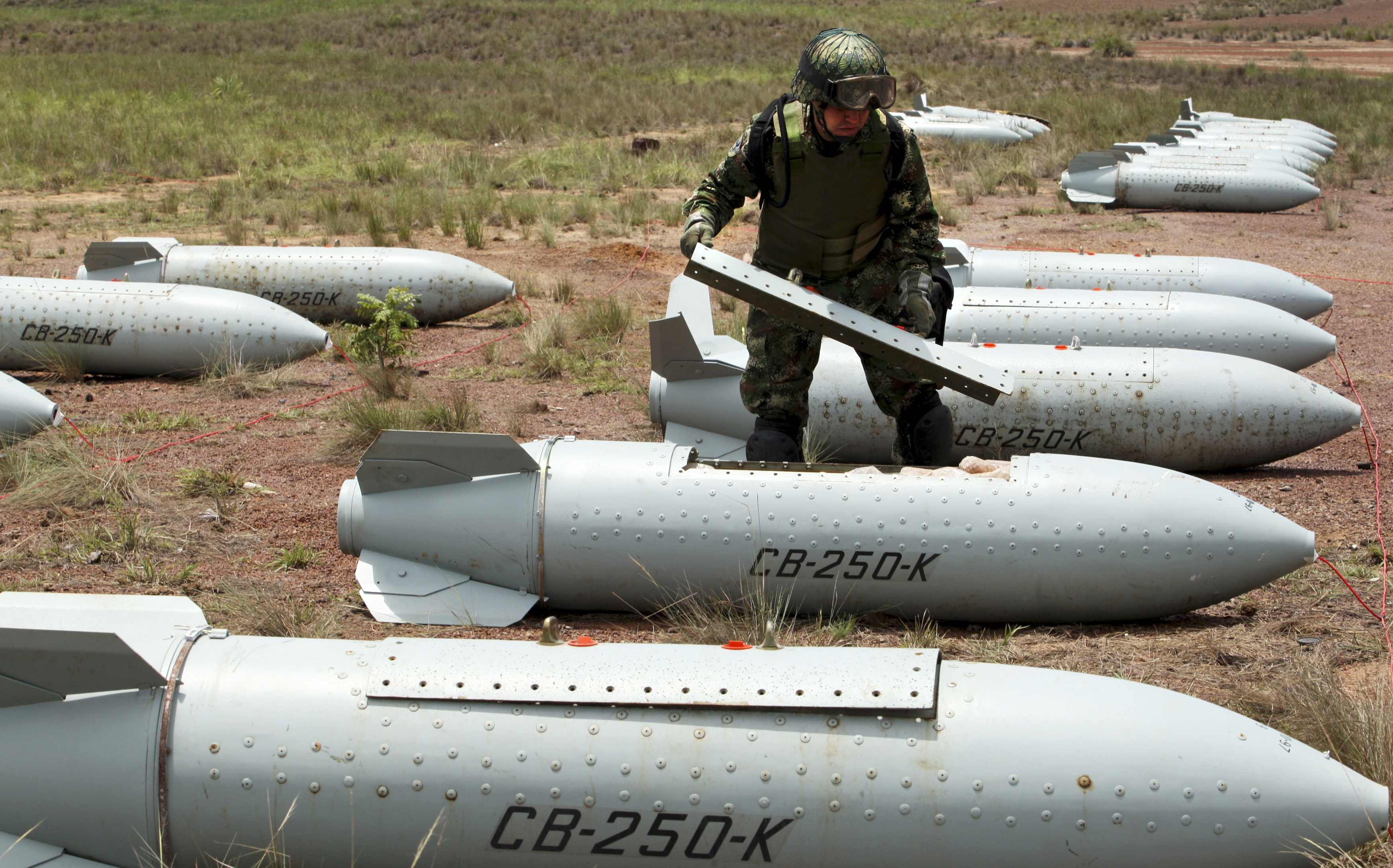Aid helps Laos move away from bombing legacy

Foreign donations are helping cut the number of injuries and deaths from cluster munitions in Laos - per capita the most heavily bombed nation in the world.
Timothy Schaffter, head of Unicef Laos, tells swissinfo.ch that funding from countries like Switzerland is essential in curbing the accidents that still occur daily, three decades after the end of the Vietnam War.
Schaffter was in Zurich for a meeting with Unicef Switzerland, one of the biggest financial supporters for Unicef educational programmes about unexploded bombs in Laos.
Cluster bombs dropped by the United States forces in the 1960s and 1970s scattered nearly 270 million of submunitions across Laos, one third of which did not explode and are an ongoing danger.
Next month Laos hosts a meeting of signatory states of the Convention on Cluster Munitions, which came into force on August 1. It effectively bans such weapons, which are designed to release large numbers of submunitions which explode before, on or after impact.
Switzerland was one of the signatory countries of the convention but has yet to ratify the treaty.
swissinfo.ch: Laos is one of the countries most affected by unexploded submunitions and around half of the related accidents involve children. Why are children particularly affected?
T.S.: These small bombs are all over the country. Children are very curious, they see this round object and they’ll pick it up. It looks like a ball, they’ll throw it and it can explode at any point of contact. Often because they are young children they don’t recognise the danger of these bombs. So part of the project we’ve had, with support from Switzerland, has been to educate children about the dangers.
The other phenomenon is that many of the areas which have been so heavily bombed are very poor. The bombs have rendered large areas of land unusable for agriculture, so the families are poor. How do they get money? They go and look for scrap metal. Children are actually involved in this. So a child aged six or seven will be out with a metal mine detector looking for these bombs, a third of which are still lethal.
swissinfo.ch: Is the local population becoming more aware of the issue?
T.S.: The number of accidents has been declining steadily. It’s a real linear decline. I think it’s due to two factors: education certainly and also fewer and fewer families are engaged in collecting scrap metal. But what we’re finding is that although there are fewer accidents, a higher percentage affect children.
These unexploded bombs are everywhere. In school yards, where people might go to collect water, they can be stuck in trees, they can be buried deep in the ground. So there’s risk in all those different environments.
swissinfo.ch: How has this legacy of the 1960s and 1970s Vietnam bombing affected modern-day life in Laos?
T.S.: The risk is still there. On average, six days a week there’s one bombing accident and someone is either maimed, bombed or killed. We have now approximately 13,500 people who have lost a limb and are permanently disabled. So it’s a long-term impact for the families.
If we superimpose a map of the areas that have been bombed over a map of the poorest parts of the country [you can see] there’s a direct correlation. The poverty is linked to the bombing and ironically because of the poverty then people look for scrap metal and then they get injured even more. So it’s really a vicious ongoing cycle that’s been going on since the 1960s.
swissinfo.ch: What is Unicef doing to help turn around the current situation? What other help is needed from outside the country?
T.S.: With support from Unicef in Switzerland, Unicef has played a major role to educate: educating communities, educating children of the risks of these unexploded ordinances. At the community level we have used many methods: puppet shows, drama, posters, booklets, videos with key messages, including identifying what the bombs look like. We also encourage household gardens which hopefully will raise more income for families. We also work with some civil societies. We’re helping government pass legislation which restricts the metal detectors used for looking for scrap metal.
But all of these efforts are funded from outside the country. It is still an extremely poor country and the government is still highly dependent on outside assistance. In fact the assistance we are getting from Switzerland is making a major, major contribution in addressing activities in the areas I’ve mentioned.
swissinfo.ch: The Convention on Cluster Munitions came into force on August 1. How will it help Laos now?
T.S.: The convention calls for sweeping obligations from states. This includes the obligation to provide victim assistance, and not only to the individual affected but also family members and communities. We are hoping this will bring additional outside support to Laos.
Laos has also played a major role in encouraging countries to sign and ratify the convention. And Laos is supporting the first member state meeting in November. Countries will be coming together to discuss the convention and hopefully this will be an opportunity for other countries to commit to ratifying the treaty. By holding it in Laos it also brings a lot of attention to Laos. It’s an opportunity for visiting countries to go out into the field to see the situation in Laos and hopefully this will bring additional resources. I think Laos feels really a moral obligation to help guide the world to ban these munitions.
swissinfo.ch: A quorum of countries have ratified the Convention on Cluster Munitions. How important is it for other countries like Switzerland to pursue moves to ratify the treaty?
T.S.: Because there’s such support already for the convention that even though countries haven’t signed, including big ones like China and the US, they are very strongly bound morally at least never to use cluster munitions.
I think it’s important for Switzerland and all countries to ratify. It shows their real national commitment. I’m optimistic that slowly countries will ratify and that really the world will be rid of cluster munitions once and for all.
Cluster munitions are a type of explosive weapon which contains smaller “bomblets” or submunitions the size of an orange.
Between 1964 and 1973, the US flew more than half a million bombing missions, delivering more than two million tons of explosive bombs, in an attempt to block the flow of North Vietnamese arms and troops through Laotian territory. The bombs dropped include more than 266 million submunitions.
Major land battles, including those during the war for independence during the French colonial era and between the Pathet Lao and the Royal Lao forces, also contributed vast quantities of unexploded heavy bombs, rockets, grenades, artillery munitions, mortars, anti-personnel landmines, and improvised explosive devices.
Since 1973, 12,000 people have been involved in accidents with such bombs. Of those 60% are killed. Around 50% of accidents involve children.
Of the 266 million submunitions dropped, 30% did not explode.
The Laos National Unexploded Ordnance Programme destroyed around 450,000 unexploded submunitions from 1996 to May 2010.
A third of accidents happen in village centres, another third in rice fields, 12% near forests and 7% on paths and roads.
Most accidents happen through handling munitions (24%) and farming (22%), while it can also happen while collecting wood (14%), lighting fires for cooking (12%) and playing with the bombs (11%).
(Source: Laos National Unexploded Ordnance Programme)
The Swiss Agency for Development and Cooperation (SDC) supports the National Regulatory Authority, a governmental body that regulates, monitors and coordinates the unexploded bomb sector in Laos.
The NRA is also responsible for implementing the Convention on Cluster Munitions and other international treaties. SDC will provide around SFr300,000 per year for the next three years, for the overall governance of the sector, increasing institutional and human resource capacities and implementation of the convention.
SDC also supports mine risk education and clearance in high priority areas. It will provide about SFr700,000 per year for the next three years.
Both types of support are being contributed to a multi-donor endeavour lead by the United Nations Development Programme. Switzerland is also a member of the steering committee.

In compliance with the JTI standards
More: SWI swissinfo.ch certified by the Journalism Trust Initiative













You can find an overview of ongoing debates with our journalists here . Please join us!
If you want to start a conversation about a topic raised in this article or want to report factual errors, email us at english@swissinfo.ch.